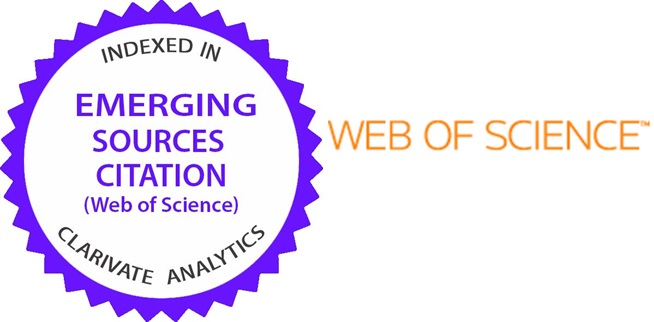ACCOUNTING IRREGULARITIES AND TAX AGGRESSIVENESS
DOI:
https://doi.org/10.31436/ijema.v24i1.391Abstract
We examine the association between the incidence of accounting irregularities and aggressive tax reporting. We use Beneish’s M-score model to measure accounting irregularities and effective tax rates (ETR) to measure tax aggressiveness. Based on analysis of publicly listed Malaysian firms from 2008 to 2011, we find a positive but not significant relationship between accounting irregularities and tax aggressiveness. Though contrary to prior findings, our study adds to the evidence of the various motivations behind the unethical behavior involving financial reporting and/or taxation decisions. The finding of this study is useful to both financial and tax authorities in understanding the link between financial and tax reporting decisions.
References
Abdul Wahab, N.S., and K. Holland. “Tax Planning, Corporate Governance and Equity Value.†The British Accounting Review 44, no. 2 (2012): 111-24.
Ariff, A.M., and H.A. Hashim. “Governance and the Value Relevance of Tax Avoidance.†Malaysian Accounting Review 13, no. 2 (2014): 87-108.
Ballesta, P., and E. Meca. “Ownership Structure, Discretionary Accruals and the Informativeness of Earnings.†Corporate Governance 15, no. 4(2007): 677-91.
Banker, R., S. Devaraj, R. Schroeder, and K. Sinha. “Performance Impact of the Elimination of Direct Labour Variance Reporting: A Field Study.†Journal of Accounting Research 40, no. 4 (2002): 1013-36.
Beneish, M.D. “The Detection of Earnings Manipulation.†Financial Analysts Journal 55, no. 5(1999): 24-36.
Bhattacharya, U., H. Daouk, and M. Welker. “The World Price of Earnings Opacity.†The Accounting Review 78, no. 3(2003): 641-78.
Callihan, D. “Corporate Effective Tax Rates: A Synthesis of the Literature.†Journal of Accounting Literature 13 (1994): 1-43.
Chen, S., X. Chen, Q. Cheng, and T. Shevlin. “Are Family Firms More Tax Aggressive than Non-Family Firms?†Journal of Financial Economics 95, no. 1 (2010): 41-61.
Desai, M. “The Divergence between Book and Tax Income.†Working paper. Harvard University, Cambridge MA, 2002.
______, and D. Dharmapala. “Corporate Tax Avoidance and High-Powered Incentives.†Journal of Financial Economics 79 (2009): 145-79.
Dhaliwal, D., C. Gleason, and L. Mills. “Last Chance Earnings Management: Using the Tax Expense to Meet Analysts’ Forecasts.†Contemporary Accounting Research 21, no. 2 (2004): 431-57.
Dyreng, S. “The Cost of Private Debt Covenant Violation.†Working paper. Duke University, 2009.
Erickson, M., M. Hanlon, and E. Maydew. “How Much Will Firms Pay for Earnings that Do Not Exist? Evidence of Taxes Paid on Allegedly Fraudulent Earnings.†The Accounting Review 79, no. 2 (2004): 387-408.
Frank, M., L. Lynch and S. Rego. “Tax Reporting Aggressiveness and its Relation to Aggressive Financial Reporting.†Accounting Review 84, no. 2 (2009): 467-96.
Hamid, F.Z.A., R. Shafie, Z. Othman, W.N.W. Hussin, and F.H. Fadzil, “Cooking the Books: The Case of Malaysian Listed Companies.†International Journal of Business and Social Science 4, no. 13 (2013): 179-86.
Hanlon, M., and S. Heitzman. “A Review of Tax Research.†Journal of Accounting and Economics 50 (2010): 127-78.
Heltzer, W., M.P. Mindak, and S. W. Shelton. “The Relation between Aggressive Financial Reporting and Aggressive Tax Reporting: Evidence from Ex-Arthur Andersen Clients.†Research in Accounting Regulation 24 (2012): 96-104.
Lennox, C., P. Lisowsky, and J. Pittman. “Tax Aggressiveness and Accounting Fraud.†Journal of Accounting Research 51, no. 4 (2013): 739-78.
Manzon, G., and G. Plesko. “The Relation between Financial and Tax Reporting Measures of Income.†Tax Law Review 55 (2002): 175-214.
Ming, T., and C. Gee. “The Influence of Ownership Structure on the Corporate Performance of Malaysian Public Listed Companies.†ASEAN Economic Bulletin 25, no. 2, (2008): 195-208.
Md. Noor, R., N.A. Matsuki, and B. Bardai. “Corporate Effective Tax Rate: A Study on Malaysia Public Listed Companies.†Malaysian Accounting Review 7, no. 1 (2008): 1-18.
Md. Noor, R., N.S.M. Fadzillah, and N.A. Mastuki. “Corporate Tax Planning: A Study on Corporate Effective Tax Rates of Malaysian Listed Companies.†International Journal of Trade, Economics and Finance 1, no. 2 (2010): 189-93.
Phillips, J., M. Pincus, and S. Rego. “Earnings Management: New Evidence Based on Deferred Tax Expense.†The Accounting Review 78, no. 2 (2003): 491-521.
Schiehll, E. “Ownership Structure, Large Inside/Outside Shareholders and Firm Performance: Evidence from Canada.†Corporate Ownership & Control 3, no. 3 (2006): 96-112.
Shackelford, D., and T. Shevlin, “Empirical Tax Research in Accounting.†Journal of Accounting and Economics 31, no. 1-3 (2001): 321-87.
Shackelford, D., J. Slemrod, and J. Sallee. “Financial Reporting, Tax, and Real Decisions: Toward a Unifying Framework.†International Tax Public Finance 18 (2011): 461–94.
Wooldridge, J.M. Introductory Econometrics: A Modern Approach (2nd ed.). Ohio: Thompson, 2003.








